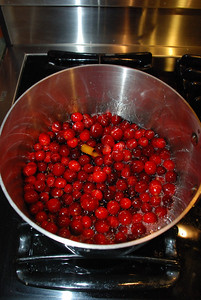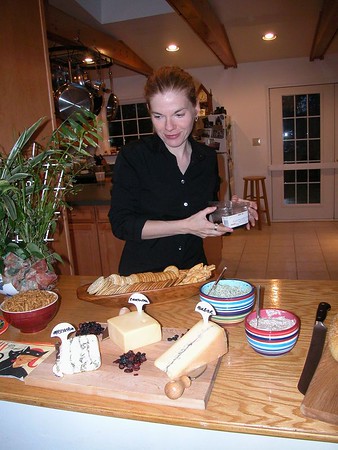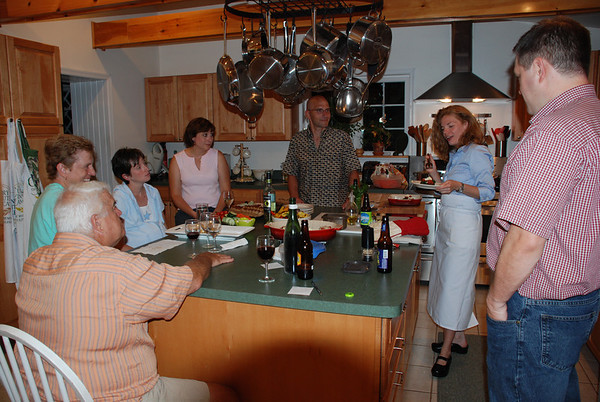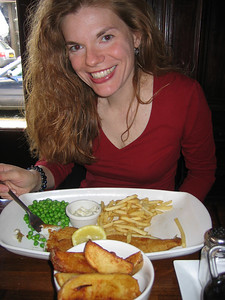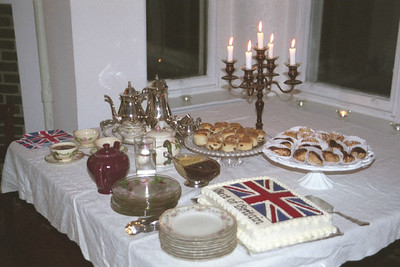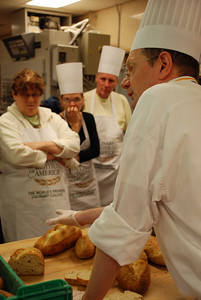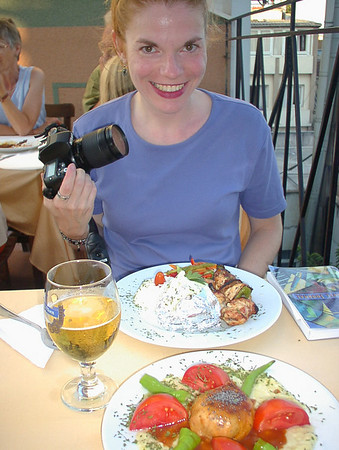 I fell in love with crepes on a cold, late December evening in Paris. Famished as well as jet-lagged, I roamed the 1st arrondissement in search of something warm, filling and quick to eat. On a sex shop-lined street near our rented apartment on Rue Saint Denise Impasse I spotted a stout, middle-aged man standing on a street corner, cooking paper thin pancakes on an oversized, portable hot plate. After flipping them once, he filled his crepes with fresh, sliced bananas, the chocolate-hazelnut spread Nutella, strawberry preserves or a combination of the three. He then rolled up the griddle cakes, sprinkled them with granulated sugar, wrapped them in sheets of waxed paper and handed them out to the hungry.
I fell in love with crepes on a cold, late December evening in Paris. Famished as well as jet-lagged, I roamed the 1st arrondissement in search of something warm, filling and quick to eat. On a sex shop-lined street near our rented apartment on Rue Saint Denise Impasse I spotted a stout, middle-aged man standing on a street corner, cooking paper thin pancakes on an oversized, portable hot plate. After flipping them once, he filled his crepes with fresh, sliced bananas, the chocolate-hazelnut spread Nutella, strawberry preserves or a combination of the three. He then rolled up the griddle cakes, sprinkled them with granulated sugar, wrapped them in sheets of waxed paper and handed them out to the hungry.
Mesmerized by the honeyed fragrance and simple artfulness of his creations, I slid into line and awaited my turn for a confiture d’fraise, or strawberry jam, crepe. In less than five minutes I had in my hand a warm, otherworldly meal. Tender to the tooth and with a delicate sweet touch, they were like nothing I had ever eaten.
Prior to this night I had consumed many crepes. Yet, they had tasted nothing like these. Thicker and with a decidedly floury flavor, the ones that my friends and I had made resembled traditional pancakes.
The next morning I returned to the crepe stand for breakfast – basically, the same as my dinner but this time consumed at nine in the morning. I continued this pattern throughout my stay and on subsequent trips to the country. Quick and delicious, this treat became the epitome of French fast food for me.
Back home I scoured the East Coast for a creperie that could recreate this delicacy. My neighborhood on Manhattan’s Upper West Side failed me. Too crispy. Too sparsely filled. Too upscale or nouveau cuisine. Just too darned expensive.
Disillusioned, I tinkered around with some existing recipes and came up with my own version. While they don’t surpass those luscious French originals, these crepes rank a close second. I use a minimal amount of batter swirled out evenly on a heated, lightly buttered crepe pan. After cooking both sides, I slather them Nutella or strawberry jam, fold them into triangles, and enjoy!
Unfilled crepes can be made several hours in advance and refrigerated. Simply lay the first crepe on a plate then place a sheet of waxed paper over top of it. Lay the next crepe on top of the paper, cover it with a sheet of waxed paper and repeat. After the last crepe has been placed, cover the plate with plastic wrap and place in the refrigerator. The crepes can be re-heated in the crepe pan – roughly 20 seconds on each side – or served cold.
Sweet Crepes
Makes 10 8-inch crepes
Ingredients:
1 cup all purpose flour, sifted
1 tablespoon granulated sugar
pinch of salt
2 eggs, at room temperature
1 ½ cups skim milk, at room temperature
2 teaspoons vanilla
2 tablespoons unsalted butter, melted and cooled
butter for greasing crepe pan
granulated sugar, optional garnish
honey, optional garnish
Sift the flour, sugar and salt into a bowl.
In a separate bowl whisk together the eggs, milk, vanilla and butter. Combine the liquids with the flour and whisk these ingredients together until most of the lumps have been removed. Refrigerate the batter for at least 1 hour. Strain out lumps, if necessary, before using.
Using an 8-inch crepe pan or low-sided frying pan, heat the pan then add a dab of butter. Coat the entire surface of the pan with the melted butter.
Holding the pan off the flame, pour about 2 to 3 tablespoons of batter onto the pan. Swirl the batter so that the entire surface is evenly coated with batter.
Cook for 2 to 3 minutes or until the bottom is light brown and the top has set. Using either a spatula or your fingers, flip the crepe over and allow the other side to cook for 1 minute.
Place the crepe on plate and spoon jam, Nutella or fresh fruit into the center. Fold the crepe in half then into a triangle. Sprinkle sugar or drizzle honey over the top and serve.
